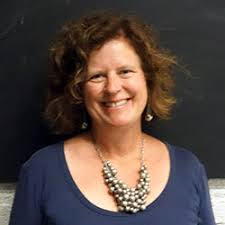
Anne Herr: DC still has a shortage of high-quality school options
Last week the DC Public Charter School Board rightfully approved five applications to create new schools. These charter schools hold the promise to support students who live in wards that lack quality options, or target student populations that are traditionally marginalized.

The board’s approval of these schools came on the heels of a memo from DC Deputy Mayor for Education Paul Kihn that some saw as saying that new schools were unnecessary based on the number of schools in the District already suffering from low enrollment. As Kihn’s memo noted, however, “facility utilization” is just one factor in issuing new charters. He reiterated this in a statement after the vote praising the members’ “attention to application quality, school mission, inclusivity, and student and family needs.”
Unfortunately, some seized on Kihn’s initial memo in an attempt to bolster their contention that we don’t need any new schools because there are empty seats in existing schools. This argument, however, misses the point. The issue facing the District is not whether there are enough spaces to accommodate every student; it’s whether there are enough spaces in high-quality schools that parents want for their children, an issue not addressed in Kihn’s analysis. Until there is a spot at an excellent school for every student in the city, we should not stop investing in creating high-quality schools.
Across the city, 56 schools earned four or five stars on the new STAR framework introduced last December by the Office of the State Superintendent of Education. All of these high-performing schools — regardless of location or sector — have waiting lists. Under-enrollment, not surprisingly, is concentrated in lower-performing schools. Moreover, there is a geographic and socioeconomic component to both under-enrollment and low performance. Schools in wards 2 and 3 have little or no excess capacity and are frequently overcrowded. Every public school in Ward 3 and all but three schools in Ward 2 earned four or five stars on the STAR framework; and there are no one- or two-star schools in these wards. In contrast, wards 5, 7 and 8 have the greatest number of empty seats. Of the 76 schools listed by My School DC in wards 7 and 8, only seven earned four or five stars — and all of them are public charter schools. Although these wards have more seats than students, available seats in high-quality schools are scarce.
The city’s public-school enrollment fell consistently from the 1960s through 2008, when enrollment began to grow. The years of declines left the city with a huge number of empty and under-enrolled school buildings. The District’s first charter schools opened at a time when the city had many thousands of empty seats, so excess capacity is nothing new. Existing schools did not meet the needs of DC students or families — especially low-income families and communities east of the Anacostia River — and they still don’t.
If we knew how to transform low-performing schools so that any parent from any part of the city would be enthusiastic about enrolling their children there, we should do it. Unfortunately, however, this has proved to be a challenging feat. Until we can accomplish this with certainty, it is wrong to argue that we should in effect deprive families of new options so we can force them into schools that they didn’t choose.
Demographic projections indicate that the school-age population in DC will continue to grow, and that as early as 2027 we will need more space in our city’s schools. We should grow that capacity now by allowing promising, innovative schools to open. If city officials are really bothered by the number of empty seats in existing DC public schools, they should find ways to share the excess space with high-performing charters that have waitlists but cannot expand due to limited real estate.
Anne Herr has been the director of school quality at Friends of Choice in Urban Schools (FOCUS) since 2012. Prior to that, she was co-founder and executive director of Capital City Public Charter School.
About commentaries
The DC Line welcomes commentaries representing various viewpoints on local issues of concern, but the opinions expressed do not represent those of The DC Line. Submissions of up to 850 words may be sent to editor Chris Kain at chriskain@thedcline.org.


Comments are closed.